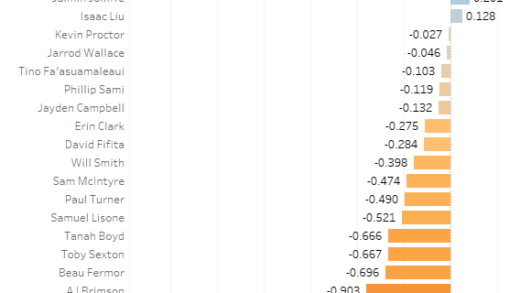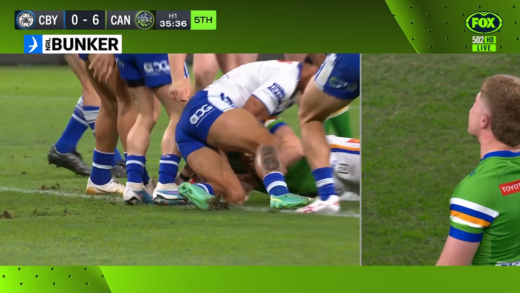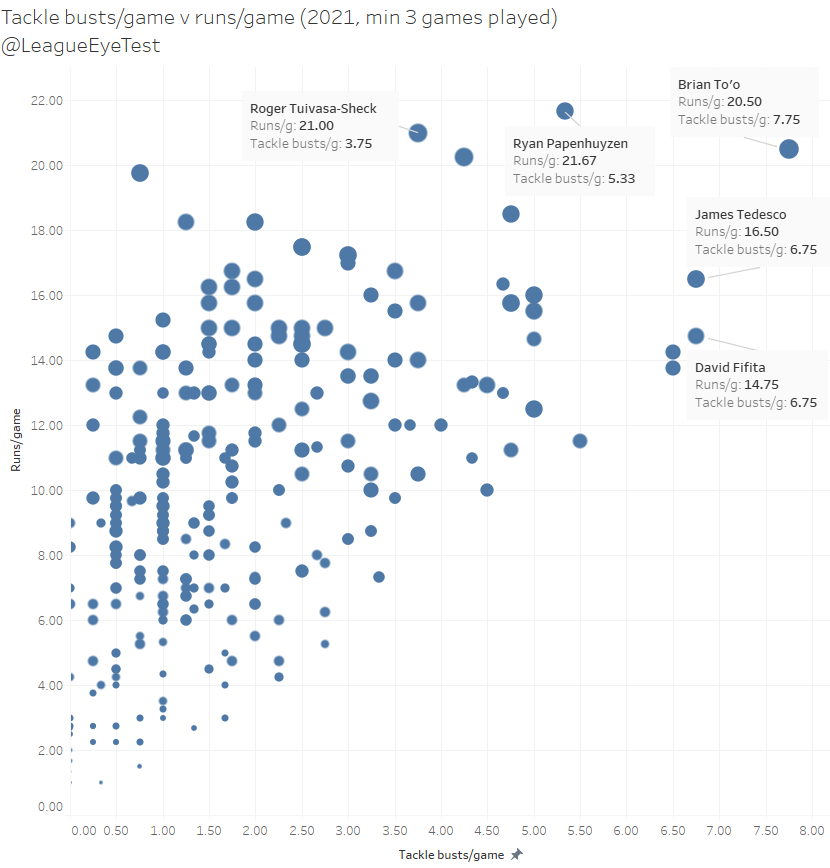Preface: this was written in early 2018 for NRL SupercoachTalk
An (alleged) wise man once said, “Damnation awaits those who chase last week’s points”. The rule of thumb in Supercoach is that you don’t trade in a player after a huge game expecting the big scores to continue.
The chances of the mid-price CTW who crossed for three tries without anyone within 30 metres of on the way to scoring 100+ again is less likely than a Wally Lewis getting through 10 minutes without uttering the phrase “dictating terms”. It’s not only improbable that they continue that form, but you usually have to spend more trades digging yourself out of the hole you traded yourself into.
Over the past three seasons, there have been 501 Supercoach scores of 100 or more. Looking deeper in to that, there have been 432 scores of 100+ where the same player appeared in another game within two rounds (I’ve removed any final game of the season and any gap larger than two rounds as they shouldn’t count as backing up).
Of those 432 instances, the average score in those games is 115.4, and they’ve been scored by 156 different players, although just 40 of them account for half of those games.
The chasing points trap exists in that from the 432 games following a 100+ score, the same players average just 57.7ppg. You might think that backing up with a 58 isn’t too bad, however the regular average of these players is 57.0ppg.
Statistically speaking, they’ve reverted to the mean and you should only expect a typical performance at best the week after. Keep in mind these are mostly small sample sizes when looking at individual players, but the overall trend is consistent.
As with any average, there’s outliers either side. Centres and wings fare the worst, with wingers averaging 50.6ppg and centres 55.4ppg in the subsequent games. Locks as you would expect see less fluctuation, scoring at 65.7ppg after posting a triple figure score.
Looking at players who are most likely to post a huge score, three players have cracked the ton at least 10 times – Johnathan Thurston, Shaun Johnson and Bryce Cartwright all have 10 each. Thurston and Johnston fare reasonably well in the following weeks, both posting averages over 70ppg.
Cartwright is closer to the average with 58.5ppg the round after and has scored 100+ starting in the second row (4 times), at five eighth (4 times) and even twice off the bench. Anthony Milford is another who is just average the week after, scoring at 57.7.ppg in nine games, while James Tedesco backs up his 100+ games quite well, posting 70.1ppg from 9 games.
If Gareth Widdop posts a 100+ score, as he has done eight times in the last three years, you may want to avoid captaining him the next week. He’s averaging just 52.2ppg in the following games. Ben Hunt (only 51.4ppg) and Cody Walker (42.3ppg) are others who don’t back up high scores consistently.
If you take out an injury affected -2 (after 106 the week before) from Tom Trbojevic in 2015 has followed up his six 100+ scores with an average of 56ppg, putting him right in the middle of the pack but below his overall average of 66ppg. His teammate Dylan Walker is another who struggles in this regard, only averaging 36.8ppg after his five 100+ outings, well below his usual 51.6ppg.
One of the larger gaps comes from Suliasi Vunivalu. The Storm winger has three games over 100 with an average of 138ppg, the highest average from players with at least three 100+ scores. However, in backing up those efforts he averages just 24.3ppg.
Jordan Rapana has the second highest average in triple figure games, posting 135.6ppg in eight games. He backs up reasonably well too, scoring at 75.8ppg in his next start, indicating he’s worth jumping on if he’s in form and could go on a run. It’s a similar situation for his partner in crime Joey Leilua, who has an average of 86.5ppg in four games after scoring 100+.
Much like Leipana, Matt Moylan also tends to get white hot when he hits a run of form. In seven games after scoring 100, he’s averaged a 79.6ppg, with six of those seven games coming at fullback.
However, I can’t talk about chasing last week’s points without a special shout out to Jack Reed’s 2015 campaign for breaking this commandment. He scored 140, 110, 110 and 70 in four consecutive weeks during the bye period, averaging 107.8ppg and increasing in value from $234,500 in round 10 to a peak of $480,600 in round 14. He did follow that run up with a 28 and had a four-week score where he didn’t break 40 from rounds 17-20, finishing the season right back to where he started at $242,600.
There is one exception for chasing last week’s points, although you’re not chasing points but chasing cash. If you believe a player can increase in cash enough over his next two games thanks to a negative BE and facilitate a trade to a gun or a fallen gun then by all means go ahead. Just ensure you’ve done the sums and can still make your trades even if things go pear shaped.
Last year Wade Graham was a popular early trade in target after smashing out 154 in round 2. Chasing points wise he was a disaster, finishing with a head knock affected 16 in round 3. However thanks to the low BE and 80 in round 4, Graham increased by $65k and was an easy bridge to a Gallen or Mannering.
A more cautionary tale is my personal experience with David Simmons in 2015. The usually Supercoach irrelevant Panthers winger scored 155 in Round 16 2015. I assumed he’d increase in value by $80-90k just by stepping on the field, as well as playing one of the big bye rounds, enabling me to jump to a gun for the run home (Narrator: he didn’t).
Simmons backed up with an 18 in 80 minutes and then scoring just 7 before going off injured the week after. Net profit was about $30k and two valuable post bye period trades wasted. You can always create more cash, but you can’t create more trades. Don’t be like Carlos.



